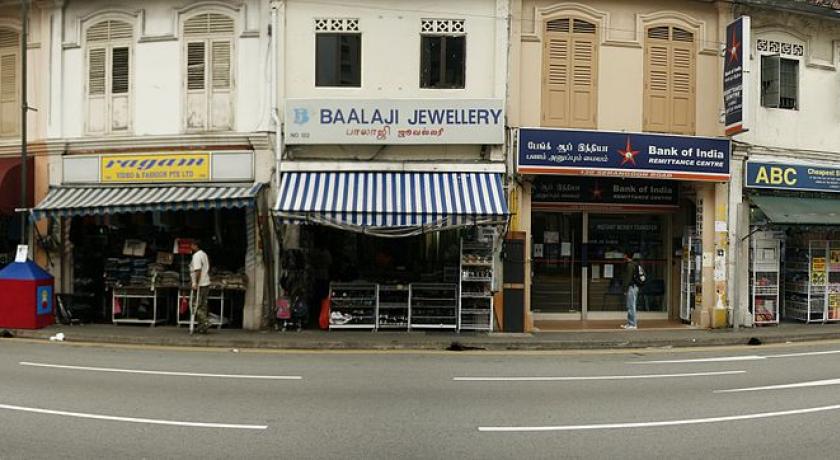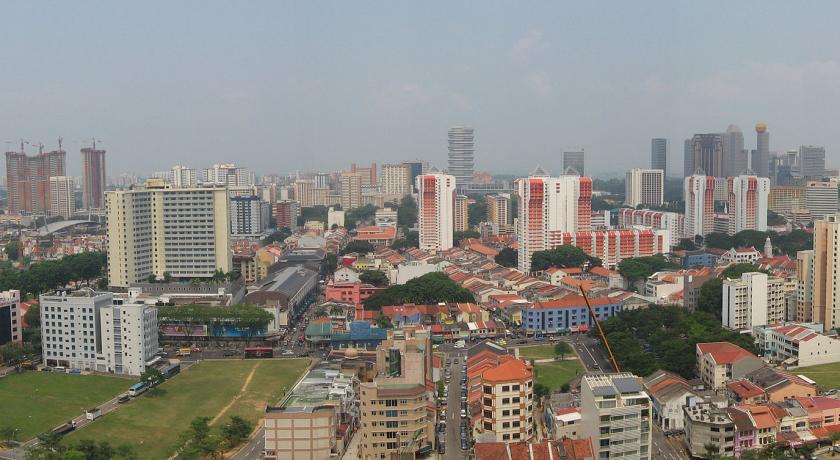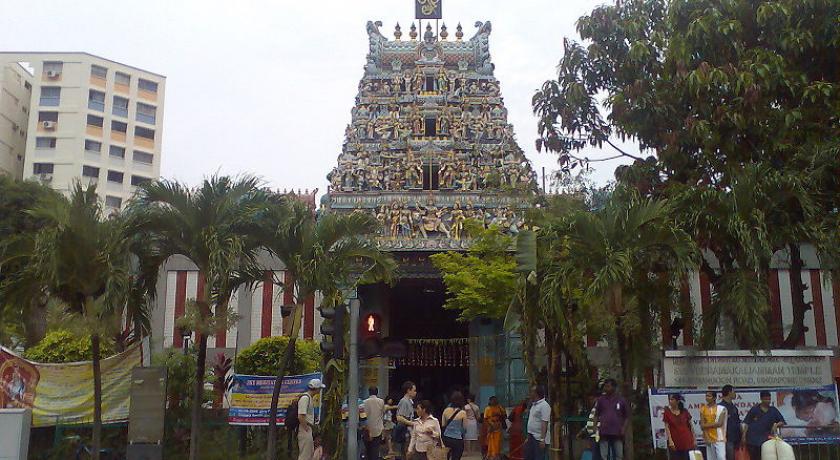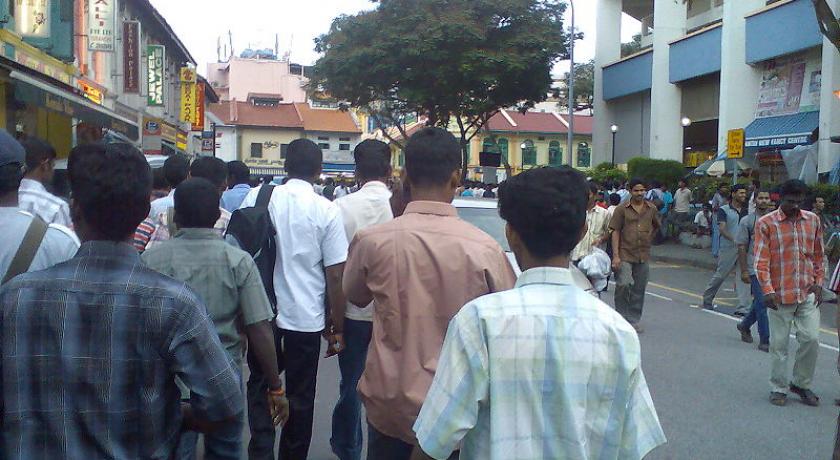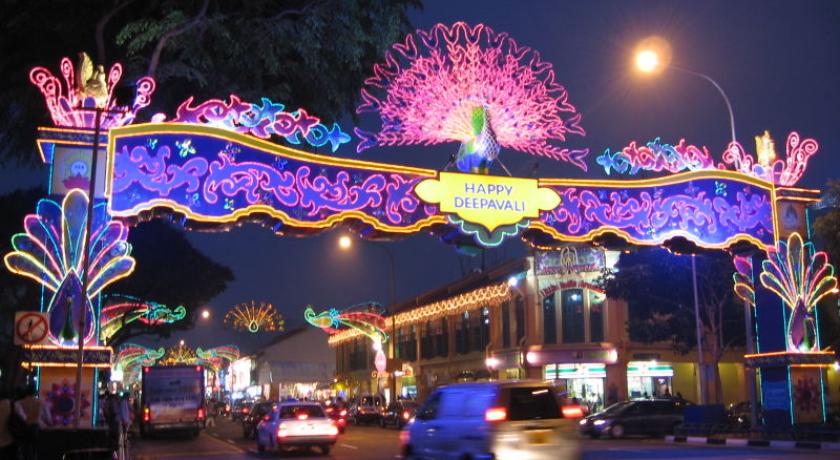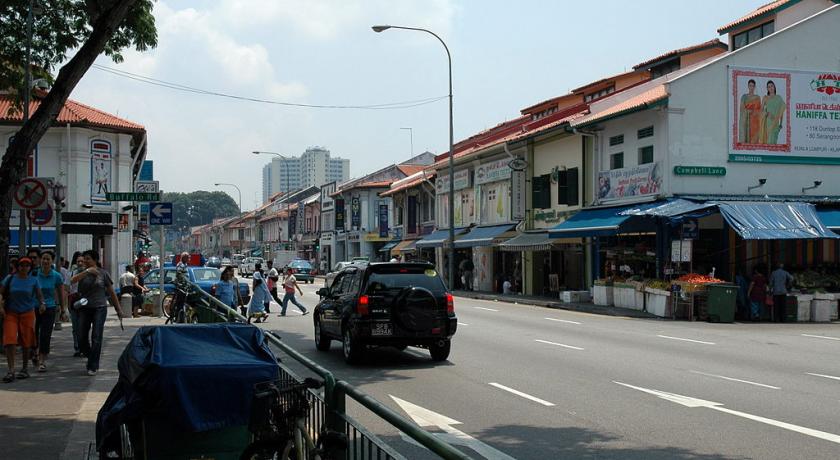Description
Little India (Tamil: லிட்டில் இந்தியா) is a Singaporean neighbourhood east of the Singapore River—across from Chinatown, located west of the river—and north of Kampong Glam. Both areas are part of the urban planning area of Rochor. Little India is commonly known as Tekka in the local Tamil community.
History
Little India is distinct from the Chulia Kampong area, which, under the Raffles Plan of Singapore, was originally a division of colonial Singapore where Tamil immigrants would reside under the British policy of ethnic segregation. However, as Chulia Kampong became more crowded and competition for land escalated, many ethnic Tamils moved into what is now known as Little India. (The Chulia Kampong district no longer exists as a distinct area.)
The Little India area is reported to have developed around a former settlement for Tamil convicts. Its location along the Serangoon River originally made it attractive for raising cattle and trade in livestock was once prominent in the area. Eventually, other economic activity developed, and by the turn of the 20th century, the area began to look like a Tamil ethnic neighbourhood.
Little India was the site of a two-hour-long riot that occurred on 8 December 2013, after a man was killed in a traffic accident. 27 people were injured, and 40 people were arrested.
Culture
Although ethnic Tamils no longer tend to stay solely segregated in one place as previously arranged under the modern People's Action Party (PAP) policy of racial harmony, for the sake of cultural heritage, many of the ethnically Tamils commercial or cottage industry usages are concentrated in Little India, although Tamil-dominant commercial zones are also found in HDB estates. Contrary to stereotypes, Little India is not solely a Tamil neighbourhood. Located in the neighbourhood alongside shops that cater predominantly to the Tamils are Chinese clan associations, places of worship of different religions, and a variety of different business ranging from electrical supplies, hardware, second-hand goods alongside traditional spice grinders and grocers. One of the more prominent examples of cross-cultural patronage besides those regarding food is that many Chinese parents go to shops in Little India to grind rice to make congee for infants. The machinery utilized in this instance was initially flown in from India to grind spices into powder for use in Tamil cuisine. Little India differs from many other neighborhoods’ in Singapore in many ways. Tekka Market is also multi-cultural, with produce and sundries that cater to the many ethnic groups in Singapore.
Attractions & Temples
Serangoon Road is the main commercial thoroughfare in Little India. It intersects Rochor Canal Road and Bukit Timah Sungei Road. Along Serangoon Road are the Tekka Centre, the Tekka Mall, the Little India Arcade, Serangoon Plaza, and the Mustafa Centre (on a side-road). Farrer Park Fields is located in the district. Several Hindu temples, mosques, and other place of worship include Foochow Methodist Church, Kampong Kapor Methodist Church which was completed in 1929, Sri Veeramakaliamman Temple, Angullia Mosque, Sri Vadapathira Kaliamman Temple, Jalan Mosque, and the Central Sikh Gurdwara. The Abdul Gafoor Mosque, built in 1859 and named after a Tamil lawyer's clerk, features Arabian- and Renaissance-style architecture. Its prayer hall, decorated with Moorish arch-work, displays a tableau featuring the history of the Islamic religion. The Sri Srinivasa Perumal Temple, along Serangoon Road, features a high gopuram (tower), and was built in 1855. The Buddhist Sakyamuni Buddha Gaya Temple, also along Serangoon Road, originally established by Thai monk Vuthisasara in 1927. Leong San See Temple is dedicated to Guanyin, the Chinese Boddhisattva of Mercy.
Culture
The most extreme thing to do in Little India is to join the festival of Thaipusam, held yearly during the full moon in the lunar month of Thai (usually Jan/Feb). Male devotees attach ornate shrines to their flesh with piercing hooks known as kavadi and walk across town in a day-long procession. Female devotees would usually just carry a pot of milk on their head and join the procession. The procession starts from Sri Srinivasa Perumal Temple in Serangoon Road and proceeds to the Sri Thandayuthapani Temple at Tank Road.
Around Deepavali, the Hindu festival of light, Serangoon Road is festively decorated (with lights, of course!) and open-air markets are set up to sell Deepavali goodies. Like Thaipusam, the exact date is set by the lunar calendar, but it takes place in October/November and is a public holiday. Near the beginning of Deepavali, the fire walking festival of Thimithi is held, where many male devotees will walk across a platform of burning coal. Though the actual fire walking takes place at the Sri Mariammam temple in Chinatown, the procession starts at the Sri Srinivasa Perumal Temple in Serangoon Road and makes its way to Chinatown early in the morning where the fire walking commences.
Transport
The North-East MRT line's Little India and Farrer Park stations, near Serangoon Road, are convenient entry points into the area. Bugis station on the East-West line is also within walking distance. The new Downtown MRT line's Rochor and Jalan Besar stations, near Sim Lim Tower, will also be operational by end of 2015 and 2017 respectively.
Getting taxis in Little India can be difficult, especially on weekends. It's best to either book by phone or head to the major roads on the edges to flag one down.
Source: https://en.wikipedia.org/wiki/Little_India,_Singapore
http://wikitravel.org/en/Singapore/Little_India
Address
Singapore
Singapore
Lat: 1.306348324 - Lng: 103.849678040


